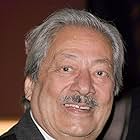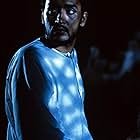A group of thieves descend upon an Indian palace to steal a collection of valuable paintings.A group of thieves descend upon an Indian palace to steal a collection of valuable paintings.A group of thieves descend upon an Indian palace to steal a collection of valuable paintings.
- Nominated for 1 BAFTA Award
- 1 nomination total
Photos
- Director
- Writer
- All cast & crew
- Production, box office & more at IMDbPro
Storyline
Did you know
- TriviaProducer Ismail Merchant has said of this movie in his memoirs 'My Passage from India' (2002): "We tossed various ideas around and finally settled on the subject of collecting Indian miniature paintings, something that [director James Ivory (Jim)] had been doing for twenty years since his interest had been aroused while he was making The Sword and the Flute (1959). Jim's interest in the subject had aroused mine. I knew little about Indian miniature painting until we made The Householder (1963), when Jim would spend all his free time visiting dealers, and I tagged along. We would go into tiny shops where [there were] shady dealers or perhaps they just looked shady [because they] sat behind shuttered windows. They would bring out musty-smelling bundles, cloth bags tied with string that they would carefully unwrap to reveal miniature treasures. Gradually I got hooked and began collecting in a modest way. Jim has a scholarly knowledge of these paintings. I don't. I go by instinct. If something speaks to me, I buy it".
- ConnectionsReferences Conversation with James Ivory (2010)
Featured review
I really enjoyed this movie. Two disparate people - one, an American art collector (Larry Pine), the other, an elderly but spry British woman (Peggy Ashcroft) who represents a British museum - arrive at a Maharaja's palace in Jodhpur, India and commence a sort of cat-and-mouse competition for the privilege to purchase a large, and apparently quite valuable, collection of old paintings which are in the Maharaja's possession -- a collection which, it seems, the Maharaja may not even be interested in selling.
Apparently it was made for TV, so it wasn't exactly what you would call "big budget," and yet I found it to be a rich feast of images of at least one part of India, both past and present. The scenery in and around the Maharaja's palace (filmed on location at Umaid Bhavan Palace in Jodhpur, India) was quite fascinating. In addition to authentic sets and scenery, there was lots of interesting Indian music, playing not only in the background but also in the "foreground," in the form of a few colorful dance sequences.
For a movie that's scarcely a little more than eighty minutes in length, I thought it held riches galore. The aforementioned scenery and music are only part of the rich tapestry found herein. The plot becomes a bit complex, but in a playful and gently comic manner, so you start to feel good as the story rolls along. The ending has a nice resolution to everything, and leaves you feeling good inside.
The actual paintings, what little we see of them, are quite wondrous, and are probably worth the proverbial price of admission.
Good performances all around, with a very literate script penned by Ruth Prawer Jhabvala. Of note is the teaming of Victor Banerjee, Peggy Ashcroft, and Saeed Jaffrey, all of whom would later appear together in 1984's "A Passage to India." Also look for a very compelling performance by Aparna Sen, who plays the Maharaja's intelligent, beautiful - and frustrated - sister, Bonnie.
Apparently it was made for TV, so it wasn't exactly what you would call "big budget," and yet I found it to be a rich feast of images of at least one part of India, both past and present. The scenery in and around the Maharaja's palace (filmed on location at Umaid Bhavan Palace in Jodhpur, India) was quite fascinating. In addition to authentic sets and scenery, there was lots of interesting Indian music, playing not only in the background but also in the "foreground," in the form of a few colorful dance sequences.
For a movie that's scarcely a little more than eighty minutes in length, I thought it held riches galore. The aforementioned scenery and music are only part of the rich tapestry found herein. The plot becomes a bit complex, but in a playful and gently comic manner, so you start to feel good as the story rolls along. The ending has a nice resolution to everything, and leaves you feeling good inside.
The actual paintings, what little we see of them, are quite wondrous, and are probably worth the proverbial price of admission.
Good performances all around, with a very literate script penned by Ruth Prawer Jhabvala. Of note is the teaming of Victor Banerjee, Peggy Ashcroft, and Saeed Jaffrey, all of whom would later appear together in 1984's "A Passage to India." Also look for a very compelling performance by Aparna Sen, who plays the Maharaja's intelligent, beautiful - and frustrated - sister, Bonnie.
Details
- Release date
- Countries of origin
- Official site
- Language
- Also known as
- Hullabaloo
- Filming locations
- Production companies
- See more company credits at IMDbPro
Contribute to this page
Suggest an edit or add missing content

Top Gap
What is the Spanish language plot outline for Hullabaloo Over Georgie and Bonnie's Pictures (1978)?
Answer




















